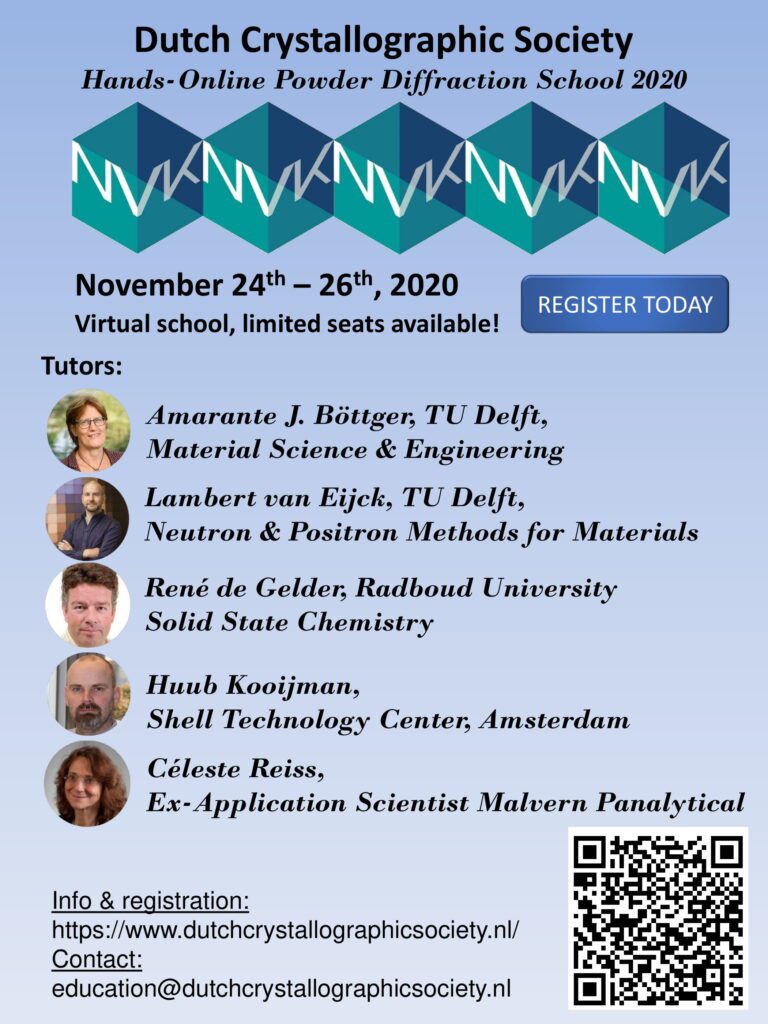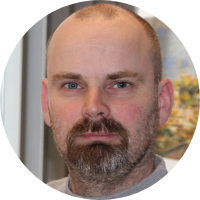24 – 26 November 2020

WHY:
Powder X-ray diffractometry (PXRD) is a technique which is omnipresent at labs around the world. Diffractometers are commercially available and typically produce very good data. Unfortunately, much of the data is not exploited to its full extent. In part, this is because scientists use PXRD as one of many experimental methods, but another reason is that the analysis of the data seems cumbersome to many PXRD users. The available software offers so many options that a first-time user easily gets lost, or the software is so black-box that you want to know what is going on under the hood.
WHAT:
With this online workshop+school on Powder Diffraction we intend to help participants to overcome the barriers to look into their data in greater detail. In a 3-day intensive course the participant will learn the basic theory behind powder diffraction and how crystallographic analysis of their (own) data may help them to answer concrete questions on the material of their subject.
WHO:
We invite PhD’s and postdocs to apply for this course. We encourage participants to register and give a description of their science case and how they would like to use diffraction and crystallography to answer the related questions.
HOW:
The school will be given with live video presentations through the Zoom platform.
Registration is no longer possible.
TUTORS:




Huub Kooijman, Researcher, Shell Technology Center, Amsterdam

BACKGROUND LITERATURE:
For basic background we refer to the book “The Basics of Crystallography and Diffraction” by Christopher Hammond.
For in-depth background we refer to the book “Powder Diffraction, Theory and Practice”, edited by Robert Dinnebier and Simon Billinge.

